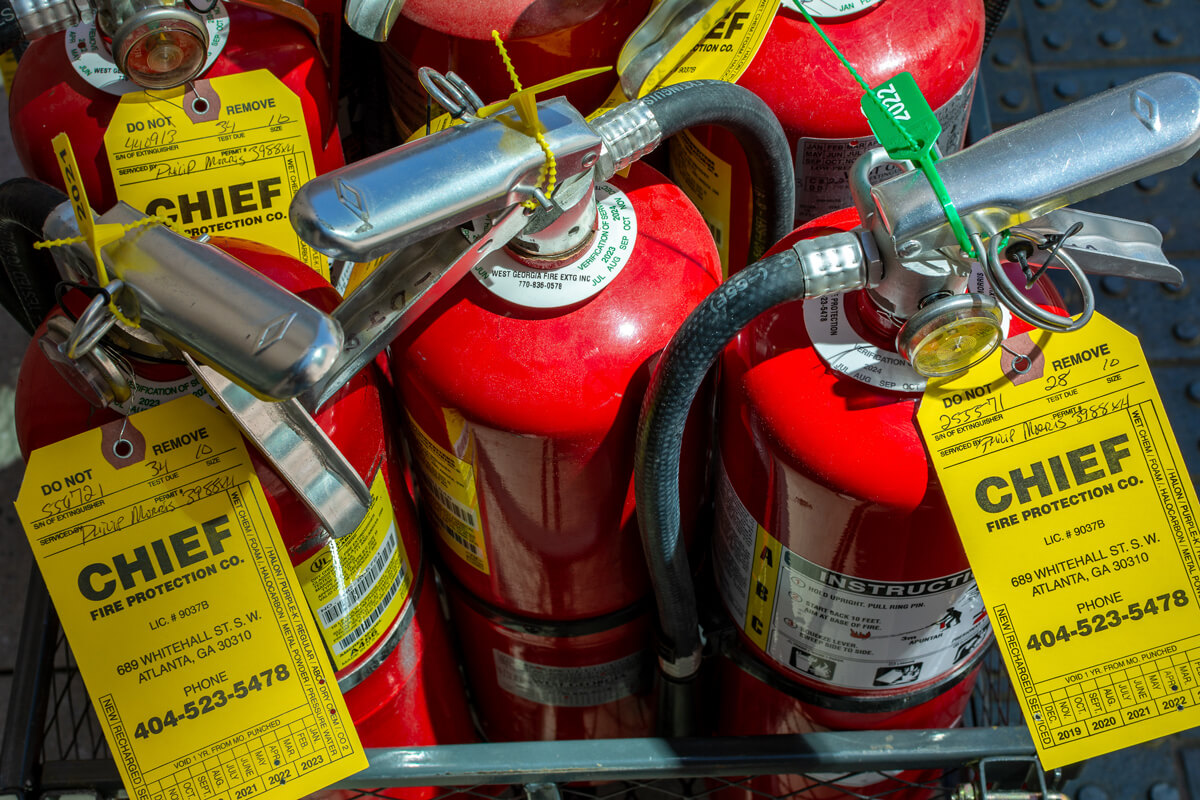Fire extinguishers ensure the protection of life and property of your facility
Fire extinguishers can put out a fire before it spreads out of control and causes significant, expensive damage.

A portable fire extinguisher is frequently our first line of defense in the event of a small fire emergency. It is crucial to make sure that these life-saving tools are always functional. A malfunctioning extinguisher may be disastrous.
Devices for putting out small flames before they cause major damage can be long lasting and dependable with the help of proper inspection, testing, and maintenance (ITM).
According to the National Fire Protection Association (NFPA), monthly inspections and annual maintenance are required for fire extinguishers.
Our personnel will visually check the extinguisher to ensure that it is properly charged and prepared for use during a monthly checkup.
The professionals at CFD will conduct a complete cleaning and ensure that all the components are functioning correctly during a yearly inspection.
Chief Facility Defenses examination will make sure that the extinguisher is both suitable for the area it is covering and that it operates properly when it is required. There are various extinguishers for various uses.
We have all the extinguishers you need no matter what the application is. Commercial, Residential etc. We have all your needs covered.
We can perform visual inspections, maintenance, and inspections of the fire extinguishers at your business in addition to training your staff on how to use them and performing visual inspections of the individual units.
Chief Facility Defense’s fire extinguisher inspection, testing and maintenance services will ensure that your fire extinguishers are fully operational and ready to go in case of an emergency.
NFPA 10 requires that extinguishers be inspected when initially installed and then monthly.
CFD’s inspection consists of the following steps:
Records of the monthly inspections will need to be maintained for each extinguisher. CFD will put a tag on the extinguisher verifying the status of the extinguisher.
The following items will be recorded:
These records need to be maintained for at least 12 months.
The manufacturer’s service manual’s recommended methods as well as a comprehensive inspection of the fire extinguisher’s essential components are included in CFD maintenance procedures. A certified CFD technician will maintain the fire extinguishers.
The maintenance will include the following:
An exterior maintenance examination of fire extinguishers must be performed annually, during a hydrostatic test, or as expressly suggested by an inspection discrepancy.
Depending on the type of extinguisher, internal inspections of extinguishers should be performed anywhere between one and six years apart.
A tag that certifies maintenance was done will be securely attached to each fire extinguisher. The following details will be identified by the tag:
If an internal inspection was done, extinguishers additionally require a verification-of-service collar that is placed around the container’s neck. This collar will include:
A thorough internal and external inspection of the extinguisher comes first in a hydrostatic test. The extinguisher is then stripped down to only the shell and hose and filled with water at a specific pressure for a specific amount of time.
The extinguisher must then be completely dried to get rid of all the water and is then reassembled and recharged.
The hydrostatic test is failed by a cylinder if there is any leakage, distortion, or persistent coupling movement; in these cases, the cylinder must be condemned.
The Hydrostatic Testing will be carried out by a licensed CFD technician. Depending on the type of extinguisher, testing is done at various periods. Every five or twelve years, these tests are performed.
For low pressure cylinders a label is required to be attached to the extinguisher. The label needs to contain:
For high pressure cylinders the tester’s identification number and the date must be stamped onto the shoulder, top, head, neck, or foot ring.
Give us a call or contact us to find out more on how we can assist your company with all your facility maintenance services.

CHIEF FACILITY DEFENSE
Atlanta
Station 1
75 Mendel Dr. SW
Atlanta, GA 30336
(404) 523 – 5478

CHIEF FACILITY DEFENSE
Nashville
Station 3
474 Woodycrest Avenue
Nashville, Tn 37210
Phone: (615) 624 – 4500